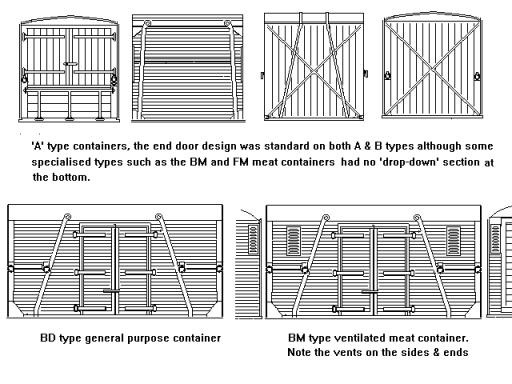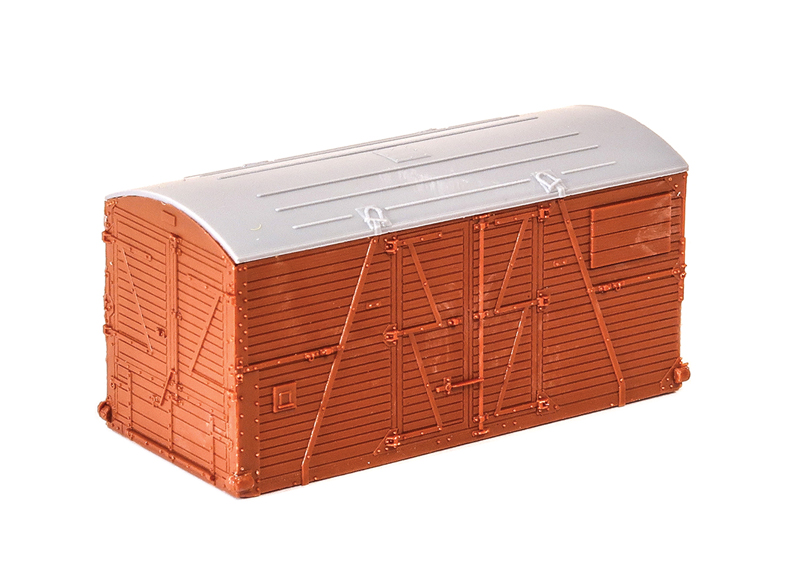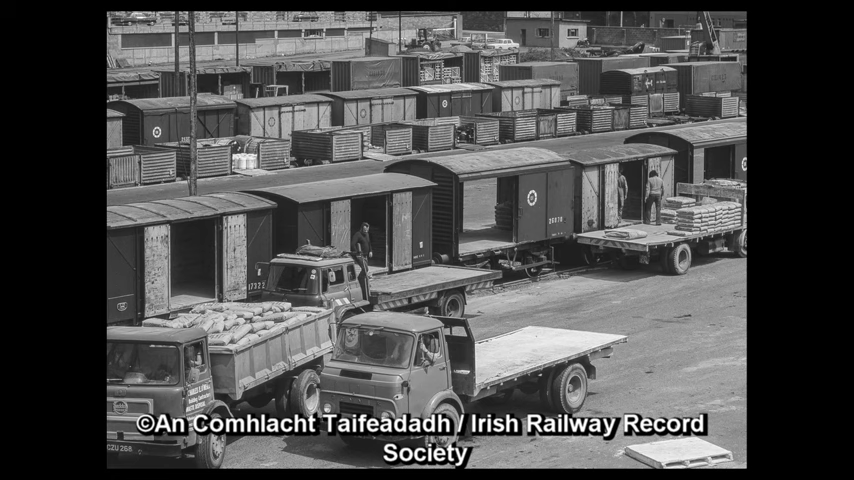-
Posts
547 -
Joined
-
Last visited
Content Type
Profiles
Forums
Events
Gallery
Everything posted by Ironroad
-
Maybe you could do that for 461 and just maybe it has sufficient commonality. I believe it operated on passenger and freight services widely across the network (south of the border) between 1923 and 1962, and again in preservation from 1990. Even those modelling realively recent times can justify it hauling models of RPSI stock.
-
Patience is in order, we waited a long time for the 121 but we got them eventually. Paddy is indeed a one man operation and that probably contributes enormously to the viability of his business but being relatively small probably has an impact on his influence with the producers. He may announce something but may have little control if for example the production run is bumped. What do we know about this rerun, is it being commissioned from Bachmann as before or independently by MM?
-
Thank you, that sounds very positive (and promising )
-
Twelve months ago you said this;- " I can promise several things next year, including steam," You didn't keep that promise, that's what I mean by disappointment.
-
Please no more promises with the ensuing disappointment. Tell us when you are actually doing something and stop alluding to what might be.
-
So just one day of 2023 left, I'm waiting with bated breath for the big announcement tomorrow.
-
Lovely, but not a soul in sight?
-
I cannot view (or hear) these videos either, nor will they download. I'm using a google notebook. After I click on the three vertical dots (to the right of the play bar), it goes through the motions of downloading and shows the video as a file in the download folder, but all I get when I open the file is a black screen. Something is incompatible.
-
It seems so, "Ricardo" the bull recovering at animal sanctuary after ... CBS News https://www.cbsnews.com › ... › Local News
-
I don't have pictures but these sketches may help, copied from https://igg.org.uk/rail/5-unit/unitload1.htm
-
Many thanks to John for taking the time to provide such an amazingly detailed response to the questions I was asking. My objective was to establish legitimacy for using available models of British Rail containers as loads on Irish wagons and that looks to be the case, albeit not on the LB flats. However I got more than I bargained for. The pictures already posted of standard BD type containers would seem to prove that these were to be seen on Irish Rails with both British Rail logos and with BLMC (British Leyland) labels. However while their use for the transportation of meat probably suggests there were significant numbers of these containers to be seen, those used for this traffic were probably not of the standard type. British Rail had two variants for meat traffic, the BM container which was ventilated & in Crimson Lake, Maroon, & Bauxite liveries depending on period, and the FM which was insulated had a plywood body and white livery Both had different end doors to the BD. Source; https://igg.org.uk/rail/5-unit/unitload1.htm Since one question invariably leads to another it would be interesting to know if both BM and FM containers were used for Irish meat traffic. Since I'm not aware of models of the BM and FM variants I'll probably content myself with a few of the BD type. One in Lyons Tea colours would be nice and perhaps a simple repaint job assuming the lettering can be found - may I ask what is the origin of the one in your picture John? Thanks
-
In a partial answer to my own question, I came across the following picture taken from a U Tube video. In the top right corner there is an open corrugated wagon with a British Rail BD container sitting in it. But were these containers also carried on the LB flats, did CIE own any of these? and other than British Leyland were any other private owner BD containers carried. Oh and before anyone says it, while the video is titled The Wheels of Commerce 1961, the frame I'm referring to is obviously a much later date.
-
Are these the pre ISO containers (from Parkside/Peco) that Fran has indicated were carried by these flat wagons? If so were they private owner or were any owned by CIE and in what liveries etc.? In a thread titled Irish/CIE Coal Wagons, Mayner posted a picture (Aug 17 2020) of CIE open 5 plank wagons carrying British Leyland containers of this type dating from about 1970. So is it possible that British Rail owned containers of this type were also seen on Irish Rails (as produced by Bachmann)?
-
For those that might be interested, there was some discussion previously on the topic of cars being carried in flat wagons, refer to the thread Ernies Massive 1930's to 2005 Photo Archive, Apr 6 & 7 2021. I was thinking the same thing, you beat me to it. A classic scene.
-
I hear what you are saying and I don't wish to seem contrary but what I find maddening is the the horribly inept, inefficient and unimaginative use of the network over many decades. Who degraded the MGWR network? Dare I say it was KIngsbridge centric pipe smokers after the formation of the GSWR, succeeded and perpetuated by a similar ilk in CIE. Plain and simple if there is congestion on the southern line, that was engineered by CIE/Irish Rail by eliminating alternative routes. Routing trains to Ballina, Westport and Galway by sending them south is logical ???. Despite the sabotage of the MGWR network, it should be relatively inexpensive to restore the double track sections given that the track bed still exists. I suspect that cost would be a a lot less than they are lavishing on what should be simple suburban halts- which is a horrible misuse of funds, that does nothing to facilitate the travelling public or fulfil their mandate. As regards traffic on the line between Dublin and Maynooth, this is is very light with only 47 trains each way on weekdays. (an average of 23 minutes between trains). So Ballina, Westport and Galway trains would actually improve service to Maynooth. There is a self financing aspect to all of this as money could go into restoring infrastructure rather than additional rolling stock to service Maynooth.. I sincerely doubt that providing a simple halt station at Ballyfermot should be a problem despite the level of traffic on the line. it's just an additional stop for trains already using the route. As I said if it could be done at Clongriffin it can and should be done there.
-
????, I asked if the ship sank because supposedly they were on the high seas on Sept 4, I think in a worst case scenario ocean freight would take about 45 days from China (we are now at 85 and still not landed), so I guess it is a really really--- slow boat from China.
-
Did the ship sink?
-
Hardly, it's just another stop for the existing suburban services. That line of thought didn't deter the opening of a station on the heavily congested northern line at Clongriffin. In any event pressure on the southern line could easily be relieved by reopening the line between Mullingar and Athlone, that closure was an own goal.
-
How much design is involved in providing two platforms, a pillbox booking office and using the existing road bridge rather than a footbridge as in other places, it could be done in weeks, Had that line been operated by the GNR rather than the GSR a station would have been built in Ballyfermot seventy years ago (eg Harmonstown 1957)). It is a very sad reflection on the thinking within CIE and the Dept. of Transport that no one has had the vision to do this in all those decades, but it's OK in 2023 to prioritise a station in Woodbrook, that has minimal benefit, over Ballyfermot. There is no excusing this. Please forgive the rant.
-
Maybe I'm missing the logic but access to that station does not look convenient and hardly justifiable in context of the catchment area. It would be more logical to spend the money on a station at the junction of Landen Rd and Kylemore Rd in Ballyfermot.
-
"He-Who-Must-Not-Be-Named"
-
Absolutely, but besides the drivers, at 6' v 5'9", the WT length was 46' 5.75" , wheelbase 37'9", & leading and trailing wheels were 37" diameter. Whereas the Fowler was 47' 2.5" long, wheelbase was 38'5", and diameter of lead an trailing wheels was 39.5". So all in all maybe not compatible enough for IRM / Accurascale to consider as a crossover model, but who knows. I acknowledge this but I'm thinking in the context of how they actually operated in normal service, not as preserved and I think what is or has been available is mostly down to Leslie. From the perspective of IRM no 461, fits the bill of something that hauled rolling stock that they already have in the pipeline.
-
I would love to see a RTR model of No.4 and who knows given IRM's propensity to look for ways to maximise use of their tooling, this might fit with the production of an LMS Fowler 2 6 4, and even an NCC class W mogul. However, while the similarities are there, the differences would make this a challenge, not to mention a lock of rolling stock for no 4 or the class W to haul. On the other hand no. 461 may be a good candidate, particularly since it hauled beet trains and no doubt Park Royals, it also ticks the box of being preserved.
-
Which came first the chicken or the egg? Snap up what's available when you can. And we already have had releases of three locos that hauled them
-
Perhaps, but it could be a question of diminishing returns. Very early on in I wrote to Hatton's more in hope than expectation requesting they consider producing their genesis coaches in CIE liveries, (I wasn't alone) never believing this might actually happen, and apparently with great success. But back then I think posted here a hope that they might at least, having exhausted all the liveries that might be viable, do a run of plain unpainted models. My thinking being that that would open the door for anyone wanting to have these models in Irish liveries. I was wrong the first time round in thinking there would not be enough demand for CIE liveries, and would be delighted to be wrong again in thinking there would not be enough demand for the GSR livery. But in the event that such a proposal is not considered viable, perhaps they can be persuaded to ultimately release unpainted versions. I suspect that would work well for many..
.png.c363cdf5c3fb7955cd92a55eb6dbbae0.png)









